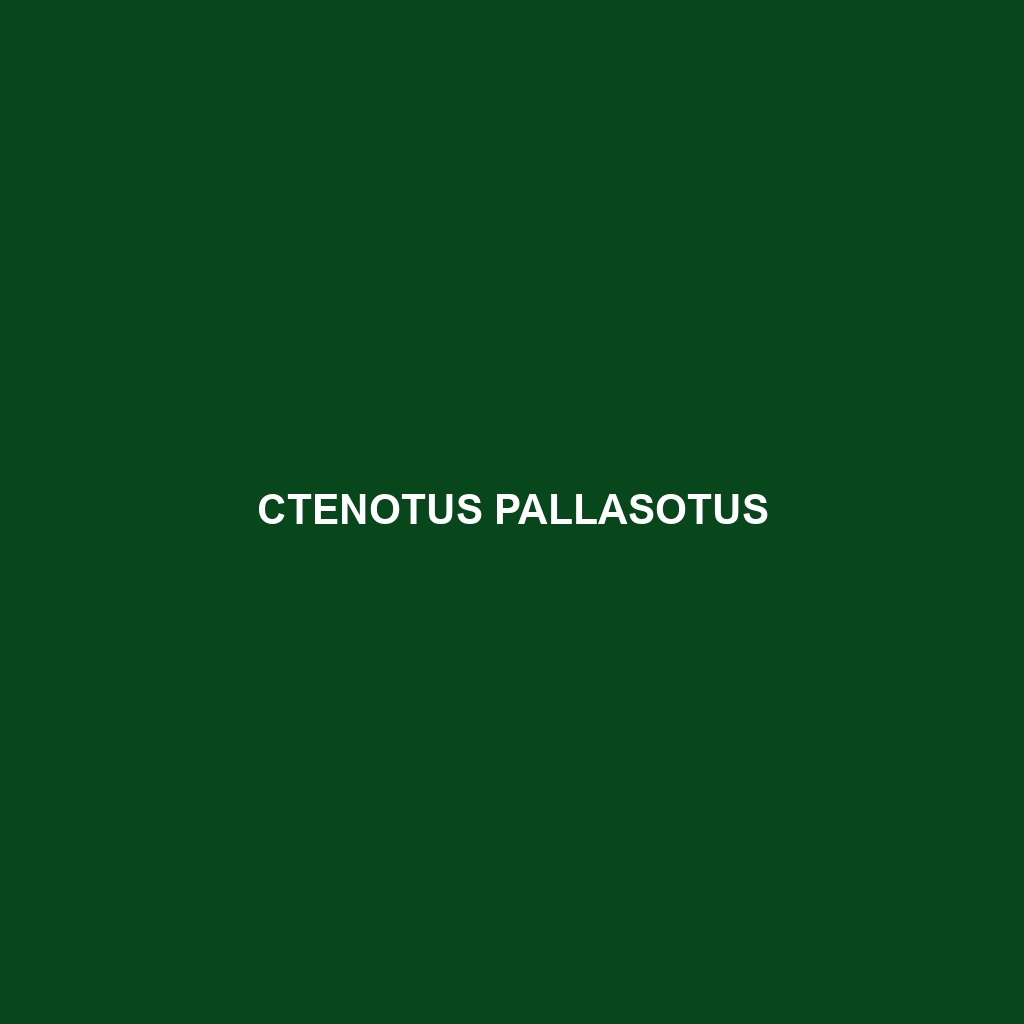Cyrtodactylus guakanthanensis is a slender gecko native to the tropical humid forests of Southeast Asia, known for its agile climbing abilities and distinctive coloration that offers effective camouflage. This nocturnal insectivore plays a crucial role in its ecosystem by controlling insect populations and serving as prey for larger animals.</p>
Tag: insectivore diet
Ctenotus pallasotus
Discover the Ctenotus pallasotus, or Pallas' skink, a vibrant 10-15 cm lizard native to southeastern Australia, thriving in grasslands and woodlands. With its remarkable camouflage and a diet primarily consisting of insects, this agile skink plays a crucial role in maintaining the ecological balance of its habitat.
Cnemaspis retigalensis
Cnemaspis retigalensis, a small lizard native to the tropical forests of Sri Lanka, is known for its striking coloration and arboreal behavior. As a Vulnerable species, it plays a crucial role in the ecosystem by controlling insect populations while thriving on insects such as ants and crickets.
Ceratophora tennentii
Introducing <b>Ceratophora tennentii</b>, the Tennent's horned lizard, a unique arboreal species from Sri Lanka's central highlands, renowned for its vibrant colors, horn-like projections, and remarkable ability to mimic leaf movement. This <b>vulnerable</b> lizard primarily feeds on insects and plays a crucial role in its ecosystem, showcasing fascinating adaptations for survival.
Calumma oshaughnessyi
<p>Discover the vibrant <b>Calumma oshaughnessyi</b>, or O'Shaughnessy’s chameleon, a medium-sized species thriving in Madagascar's humid montane forests. Renowned for its stunning color-changing abilities, this <b>vulnerable</b> chameleon plays a crucial role in maintaining the ecological balance by controlling insect populations.</p>
Brookesia minima
Discover the enchanting Brookesia minima, one of the smallest chameleons in the world, measuring just 13.5 mm in length. Found in Madagascar's rainforests, this endangered species showcases a remarkable adaptation to its humid habitat with its cryptic coloration and diet mainly consisting of small insects.
Brookesia brygooi
Discover the Brookesia brygooi, one of the world's smallest chameleons, measuring just 2.5 to 3 centimeters. Found in the humid montane forests of Madagascar, this unique species is known for its distinct coloration, flattened body, and vital role in controlling insect populations.
Bradypodion caeruleogula
Bradypodion caeruleogula, or the blue-throated chameleon, is a vibrant insectivore endemic to South Africa's mountainous forests, noted for its striking blue throat and arboreal lifestyle. As a vulnerable species, it plays a vital role in its ecosystem by helping control insect populations and serving as prey for larger predators.
Brachymeles cebuensis
<b>Brachymeles cebuensis</b>, known as the Cebu skink, is a <i>vulnerable</i> species endemic to the tropical forests of Cebu Island, Philippines. This nocturnal, burrowing skink measures 20 to 30 cm in length, features a streamlined body with reduced limbs, and primarily feeds on small invertebrates, playing a crucial role in its ecosystem.
Aspidoscelis guttatus
<p><b>Aspidoscelis guttatus</b>, commonly known as the Western Whiptail, is a slender, diurnal lizard found in arid scrublands and grasslands of the southwestern United States and Mexico. With striking stripes and smooth scales, this insectivore plays a vital role in its ecosystem by controlling insect populations and serving as prey for larger animals.</p>









